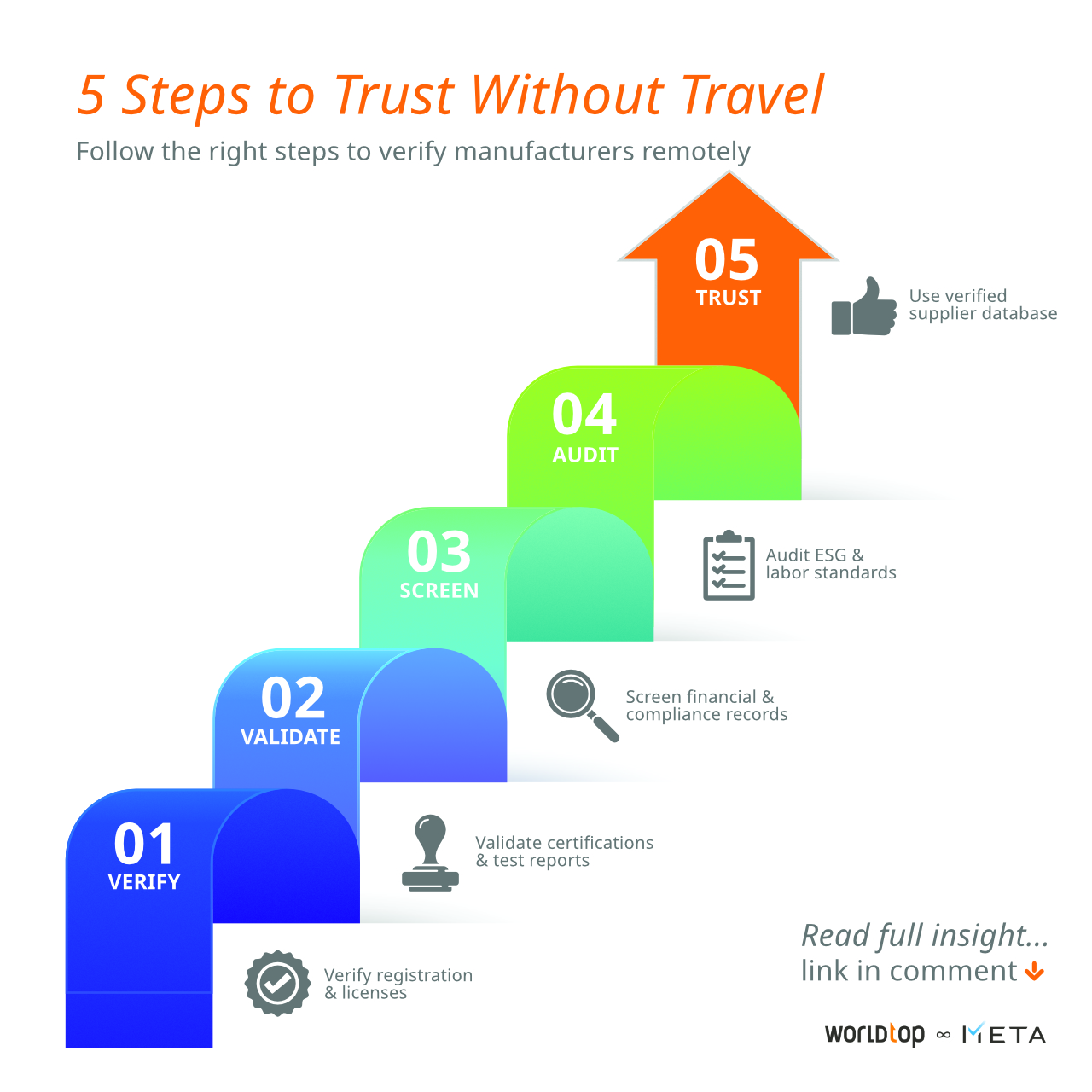
In 2024, a buyer in Uruguay wired USD 40,000 to a Chinese supplier listed online. The documents looked authentic, the factory seemed legitimate — but the supplier never shipped the goods. The paperwork was fake, the company was a shell. The buyer had no recourse except a lengthy legal battle in China (CNAL Consulting,2024).
This is not an isolated incident. Kobe Steel, one of Japan’s most respected manufacturers, admitted to falsifying inspection data for aluminum and copper products used by more than600 companies worldwide. The fraud damaged reputations across global supply chains, from automotive to aerospace.
These cases underline a harsh reality: you don’t need to be working with an unknown factory to face risk. Fraud, falsification, and compliance failures can occur anywhere in the supply chain.
For decades, Western companies assumed the only way to vet a supplier was to fly there in person — walk the factory floor, meet management, and inspect operations. But in 2025,this is no longer the only option.
Digital verification tools, compliance databases, and verified partner networks now allow companies to screen and validate suppliers without ever leaving their office.
Here’s how to protect your supply chain.
Supply chain risks in Asia aren’t hypothetical. They are documented, recurring, and costly.
📌 The lesson: Vetting isn’t just about saving money. It’s about avoiding fraud, safeguarding compliance, and protecting brand reputation.
Legitimate manufacturers should provide:
But fraudsters rely on fake or expired documents. The Uruguayan buyer case demonstrates this — the supplier had convincing certificates, but they were fabricated.
📌 Action: Always cross-check documents with official registries.
Don’t rely solely on paperwork provided by the supplier. Always verify certifications directly with the issuing body.
📌 Case tie-in: Kobe Steel proved that even reputable manufacturers may falsify test results. Importers must confirm with external labs or certification bodies, not just accept supplier-provided documents.
Some manufacturers manipulate financial data to appear healthier than they are.
📌 Action:
Compliance today isn’t limited to financials. Buyers are held responsible for labor, safety, and ESG standards in their supply chains.
📌 Action:
Individually, these steps are time-consuming. That’s where verified supplier databases streamline the process.
Worldtop & Meta’s Verified Service Provider (VSP)Database consolidates:
Instead of chasing verification across dozens of sources, you gain a single platform of pre-vetted suppliers and logistics partners.
Even if a supplier looks legitimate, these red flags should never be ignored:
📌 Case tie-in: The CNAL Consulting scam showed how fake documents and bargain prices can lure buyers into fraud.
Remote vetting isn’t just defensive — it can be a competitive edge.
Flying to Asia for every supplier audit is no longer the only option. Today, digital tools, compliance databases, and verified platforms provide a safer, faster, and more scalable path.
📌 Key Takeaway: Vetting isn’t optional —it’s the backbone of resilient supply chains.
👉 Explore how Worldtop & Meta’s Verified Service Provider Database helps you find trusted Asian manufacturers, forwarders, and warehouses. [Contact us for early access].
Q1: How do I check if an Asian manufacturer is legitimate?
Cross-check business licenses in government registries, verify certifications with issuing bodies, and use verified supplier databases.
Q2: What are the most common manufacturer fraud risks in Asia?
Fake suppliers, falsified quality data, manipulated financials, and hidden ESG violations.
Q3: Can SMEs vet manufacturers without offices in Asia?
Yes. With verified databases, remote audits, and government portals, SMEs can safely source without physical presence.
Q4: Why is ESG part of supplier vetting?
Because global buyers are increasingly accountable for labor, safety, and sustainability practices in their supply chains.